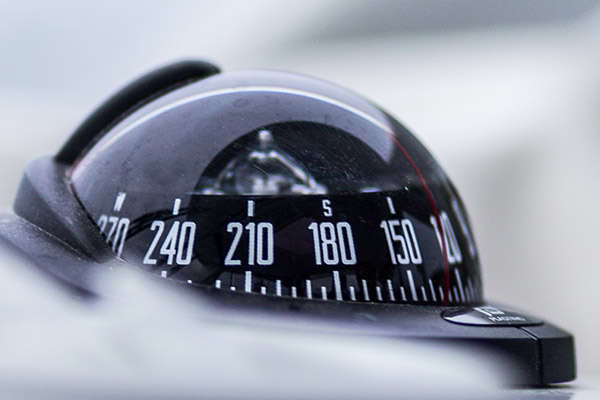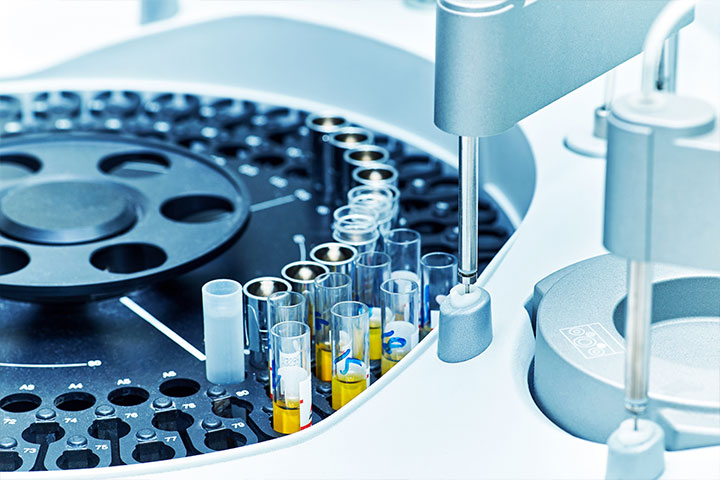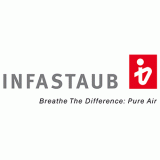
Cosmetics, make-up, perfumes and other beauty products subject to EAC Declaration. This means that all products for hair care such as shampoo, conditioner, hair spray or gel, decorative cosmetics such as lipstick, nail polish or mascara, body care like shower gel, bath additive or body lotions, facial care such as creams, masks or peels, deodorants and perfumes need a conformity assessment, before they can be imported into Russia, Kazakhstan or the EAEU.
Legal framework
The products must demonstrate their conformity with the technical regulations of the Eurasian Economic Union. The technical regulation TR CU 009/2011 On safety of perfume and toiletrie products consists of special requirements for the cosmetics.
According to the technical regulation TR CU 009/2011 there are 2 forms of conformity assessment: EAC Declaration and state registration.
Important update: In Russia, mandatory certification of cosmetics has been officially replaced by mandatory declaration of conformity. This means that while obtaining an EAC Declaration is always obligatory, certification may now be pursued only on a voluntary basis. The declaration remains the legally binding confirmation of product safety.
Main parameters in cosmetic product testing
To guarantee a thorough safety assessment, cosmetic and perfumery products are evaluated according to several fundamental parameters:
- Physicochemical properties:
These analyses examine the physical and chemical characteristics of the product — such as composition, stability, and compatibility — to confirm that it meets the required quality and formulation standards. - Microbiological evaluation:
Microbiological testing identifies and quantifies microorganisms that may be present in the product. This ensures the absence of harmful bacteria, fungi, or other pathogens that could compromise consumer health or product integrity. - Toxicological assessment:
Toxicological studies determine the potential health risks associated with the product’s ingredients or overall formulation. They assess safety in relation to different routes of exposure and help confirm that the product is safe for intended use. - Clinical evaluation:
For certain categories of cosmetics, clinical testing on human volunteers may be performed to verify both safety and performance under normal usage conditions, providing real-world evidence of the product’s compatibility and effectiveness.
EAC Declaration
The EAC declaration is a manufacturer's declaration that the products meet the minimum requirements of the technical regulation of the Eurasian Economic Union. The declaration is carried out by the manufacturer himself. The EAC Declaration becomes legally binding after its registration by a notified body in the EAEU.
The registration of the EAC Declaration may only be carried out by a company established in the territory of the EAEU. Therefore an authorized representative within the EAEU is required. If you need an authorized representative, we will be pleased to offer you a suitable company that takes over this function.
Only legal entities or individual entrepreneurs registered within the Russian Federation or other EAEU member states may apply for an EAC Declaration. Foreign companies must appoint an authorized representative. Self-employed persons and individuals cannot obtain declarations directly.
In addition to the mandatory declaration, manufacturers and importers may apply for voluntary certification to enhance credibility. However, voluntary certificates do not replace the EAC Declaration.
State registration
The conformity assessment of the products listed in Annex 12 occurs in the form of state registration. The state registration acknowledges the conformity assessment of the products with the sanitary-hygienic regulations of the EAEU.
The notified bodies accredited by Rosstandart or Rospotrebnadzor are responsible for issuing certificates of state registration. The registration procedure includes both an analysis of the manufacturer's documents, as well as laboratory tests and, in some cases, an inspection of the production. All certificates of state registration are entered in a special register and kept there.
The products that are subject to state registration:
- tanning creams
- products for skin whitening
- compounds for permanent make-up
- perfumery and cosmetic products for intimate care
- cosmetics for children
- peeling
- depilatory
- hair lighteners
- perfumery and cosmetic products for permanent waves and hair straightening
- perfumery and cosmetic products with nanoparticles
- fluorinated oral hygiene products with a mass fraction of fluorides exceeding 0.15%
- teeth whitening agents containing hydrogen peroxide, carbamide peroxide, zinc peroxide (hydrogen concentration not exceeding 0.1 to 6%)
Clarification: State registration is mandatory only for high-risk categories. General hygienic certification was abolished in 2010 (Decision No. 299 of the Customs Union Commission).
Process of conformity assessment
Before you can register the EAC Declaration, the products must be tested by an approved laboratory in the EAEU.
The products are tested for the following criteria:
- composition
- physical and chemical parameters
- microbiological parameters
- content of toxic elements
- toxic data
- clinical (clinical-laboratory) measurements
- processing
- consumer packaging
- marking of production
The corresponding requirements and permitted values are specified in the Annexes to the technical regulations 009/2011:
- Annex 1 contains a list of prohibited substances
- Annex 2 gives the maximum permissible values for the ingredients in tabular form
- Annex 3 contains the list of authorized dyes
- Annex 4 lists the authorized preservatives
- Annex 5 lists the approved UV filters
- Annex 6 contains the permitted pH values
- Annex 7 provides information on microbiological product safety
- Annex 8 contains requirements for the toxicological indicators
After successful tests, the labs create test reportss. These test reports shall be submitted at the registration of the EAC Declaration in one of the certification body.
Since January 25, 2017, perfumes and cosmetic products can be declared according to 3 schemes:
EAC declaration schemes
| Scheme | Description |
|---|---|
| 3D | is intended for serial production. This scheme requires product samples to be tested by a laboratory accredited by the EAEU. |
| 4D | is intended for serial production or a single delivery. This scheme requires product samples to be tested by a laboratory accredited by the EAEU. |
| 6D | is intended for serial production. This scheme requires product samples to be tested by a laboratory accredited by the EAEU. |
Period of validity of the EAC Declaration
Since January 25, 2017, new provisions have been applied to the validity period of the EAC Declaration.
- For series production (Scheme 3d) - 5 years.
- For Scheme 4d, the validity period of the EAC declaration is limited to the shelf life of the product.
- The declaration according to the scheme 6d is issued for a maximum of 7 years.
Documents required for the EAC declaration:
- list of all ingredients
- copy of documents with details of organoleptic and physico-chemical properties of products
- test reports (if available)
- sample of the labeling of the consumer package with the package insert
- certificate of GMP-compliant quality management system
- documents which prove the product features announced on the label, e.g. antibacterial effect, light protection factor, anti-wrinkle effect or anti-inflammatory effect of oral hygiene products
Documents required for state registration:
- list of all ingredients with concentration and mass proportions
- a quality certificate or a written confirmation from manufacturer that the products meet all quality requirements
- copy of documents with details of organoleptic and physico-chemical properties of products
- in the case of the use of nanoparticles, the exact particulars of the chemical composition of the particles and their size must be made
- a sample of the labeling of the consumer package with the package insert
- cover sheet with information on consumption characteristics, special precautions for use and instructions for use
- test reports
- certificate of GMP-compliant quality management system
- documents which prove the product features announced on the label, e.g. antibacterial effect, light protection factor, anti-wrinkle effect or anti-inflammatory effect of oral hygiene products.
The supporting documents must be submitted in Russian or in the official language of the Member State of the Customs Union.
EAC marking

The products declared according to TR CU 009/2011 must be marked with the EAC conformity mark before launching in the market. The conformity mark shall be affixed to each unit of perfumery and cosmetic production and (or) shipping documents. The marking must be carried out in such a way that it is easily recognizable and legible throughout the entire shelf life of the product. Appropriate marking may only be made if the corresponding production meets the requirements of all relevant technical regulations.
Labeling
The label shall include the following information:
- product name
- product indication, e.g. child care products
- manufacturer, his address
- country of origin (if the address of the manufacturer does not match the place of manufacture)
- importer, his address
- volume
- color and (or) tone (for make-up)
- fluorinated oral hygiene products with a mass fraction of fluorides exceeding 0.15%
- shelf life period and expiration date (month, year) or "durable until: mm-jj" or "use before: mm-jj"
- instructions for storage
- information about special precautions
- delivery number
- list of ingredients
- EAC conformity mark
Honest Sign (Chestny Znak) Traceability System
In addition to the EAC certification, for many product groups exported to Russia, the digital labeling in the “Chestny ZNAK” system has also been mandatory for several years. This traceability system, introduced by the Government of the Russian Federation, is based on a Data Matrix code that uniquely identifies each individual product unit and registers it in a central database. The goal is to eliminate counterfeit, smuggled, and non-compliant products from the market and to ensure full transparency throughout the supply chain.
Stages and Deadlines for the Labeling of Cosmetics
The list of products subject to mandatory labeling is continuously expanding. Starting from 2025, labeling will be required for the following products:
- March 1, 2025 – labeling of soaps
- July 1, 2025 – mandatory labeling of deodorants, hair care, and shaving products
- October 1, 2025 – mandatory labeling of decorative cosmetics and toothpastes
The sale of unlabelled remaining stock is permitted until the expiration date. An overview of all product categories already included can be found in our articles: Mandatory Labeling of Goods. “Chestny ZNAK” Goods Labeling System and Labeling of Goods in the “Chestny ZNAK” System.
Application of “Chestny ZNAK”
Labeling codes are applied to the following types of packaging:
- PET bottles
- Cardboard packaging
- Glass bottles
- Metal flacons / metal containers
- Aerosol cans
- Polymer containers / plastic jars
- Paper packaging and bags
- Foil packaging and bags
- Tubes and jars
- Doypacks and flowpacks
- Sachet bags
- Plastic canisters
Note: Manufacturers may apply the codes directly to the packaging, integrate them into the label design, or print separate labels and affix them afterward.
Responsibilities of Market Participants
All participants in the supply chain are involved in the implementation process:
- Manufacturers and importers: Registration in the Chestny ZNAK system, ordering and application of Data Matrix codes.
- Wholesalers and distributors: Recording and transmission of labeling data via EDI/EDO systems.
- Retailers: Scanning of codes at online cash registers (FFD 1.2) with data transmission to the central database.
Technical Requirements
Participation in the system requires, among other things:
- Electronic signature (UKEP)
- Access to the GIS MT “Chestny ZNAK” system
- 2D scanners and online cash registers with updated software
- Label printers or integrated marking systems
Our Support
Schmidt & Schmidt supports you at every stage — from analyzing whether your products are subject to labeling, to registration in the Chestny ZNAK system, ordering and managing codes, and practical implementation of marking and integration into your document management system. Thanks to our international presence, we ensure that all processes are carried out in full legal compliance and in accordance with the requirements of the Russian authorities.
Authorized representative
 The manufacturer, which is not based in one of the member states of the Eurasian Economic Union, is not entitled to request the conformity assessment of cosmetics to comply with the requirements of the relevant technical regulations.
The manufacturer, which is not based in one of the member states of the Eurasian Economic Union, is not entitled to request the conformity assessment of cosmetics to comply with the requirements of the relevant technical regulations.
In order to carry out a conformity assessment, the foreign manufacturer must appoint an authorized representative in one of the member states of the Eurasian Economic Union. This then represents the foreign manufacturer's interest in working with the certification bodies of the Eurasian Economic Union with regard to the safety and quality of products and compliance with technical regulations.
According to applicable law and in accordance with the technical regulation of the Economic Union, only an entrepreneur based in the territory of the Eurasian Economic Union may be named as an authorized representative.
Period of validity of EAC conformity assessment certificates for cosmetics
The validity period of the EAC certificate or EAC declaration for cosmetics differs depending on the applied technical regulations, the selected scheme, the type of production (serial production, individual delivery, etc.) and equipment and ranges on average from one to 5 years. Those parameters are determined in the respective technical regulation.
Technical Conditions (TU) and Safety Data Sheets (SDS)
For the EAC certification and declaration of cosmetics, the existing GOST standards are primarily applicable. They define the fundamental requirements for the safety, quality, and labeling of cosmetic products. However, if no relevant GOST standard exists for a specific product or innovative formulation, the manufacturer must develop their own Technical Conditions (TU). These serve as a reference document describing the product’s characteristics, testing methods, and quality control procedures.
The preparation of TU may be necessary, particularly for novel cosmetics, products with special active ingredients, or imported formulations. TU are developed individually and form the legal basis when no standardized requirements exist within the national system. Schmidt & Schmidt assists manufacturers in drafting TU and coordinates them with the relevant certification bodies.
In addition to TU, Safety Data Sheets (SDS) also play an important role. An SDS contains comprehensive information on ingredients, potential hazards, storage and handling conditions, as well as first aid measures. For imported cosmetic products, the SDS is often part of the documentation that must be submitted to customs and market surveillance authorities.
For the declaration of cosmetics imported from abroad, the documentation package must also include a copy of the supply contract. In this case, the importer in a member state of the EAEU acts as the applicant. The most important step in the procedure, however, remains the laboratory testing of product samples. Only on the basis of the test report can the EAC declaration be registered. For more information about testing, please visit our page Testing of Product Samples for EAC.
Specifics of Declaring Imported Cosmetics
For cosmetic products imported from abroad, special requirements apply to EAC declaration. Since foreign manufacturers are not permitted to register declarations themselves, a company established within the EAEU must act as the applicant. In practice, this role is usually taken by the importer, who brings the products into Russia, Kazakhstan, or other member states of the Eurasian Economic Union.
The documentation package for imported cosmetics includes, in addition to the technical documentation and, if applicable, the Technical Conditions (TU), the supply contract with the foreign manufacturer. This contract confirms the legal relationship and is a prerequisite for registration. In many cases, Safety Data Sheets (SDS) must also be provided, particularly for products containing special ingredients.
A critical step in the procedure is the sampling and testing of product samples in an accredited laboratory. The resulting test report serves as the legal basis for the certification body’s decision. Without a valid test report, no declaration can be registered.
In the declaration of imported cosmetics, additional questions often arise — for example, regarding the correct translation of documents, shelf life labeling, or the composition of the product line. Errors in these areas frequently cause delays and additional costs. Schmidt & Schmidt supports importers and manufacturers in the preparation process to ensure a smooth procedure and timely market entry of the products.
Safety Data Sheets (SDS) for Cosmetic Products
A Safety Data Sheet (SDS), also referred to in Russian as a паспорт безопасности, is a key document for the assessment and safe handling of cosmetic products. It provides comprehensive information on ingredients, potential hazards, safe storage and transport conditions, as well as first aid measures.
For imported cosmetics, the SDS is often a mandatory part of the documentation package for EAC declaration. Customs authorities and certification bodies use the information in the SDS to assess product safety and evaluate potential risks to health, occupational safety, and the environment.
An SDS typically includes the following sections:
- Product and manufacturer identification
- Composition and information on ingredients
- Potential hazards and risk classifications
- Safety precautions for storage, transport, and use
- Information on toxicological and ecological properties
- Recommended emergency measures (first aid, fire-fighting, spill response)
Particularly important is the accurate preparation and translation into Russian, as errors in chemical names or hazard symbols often cause delays in the procedure. A professionally prepared SDS facilitates the entire certification process and enhances legal certainty for manufacturers and importers.
Laboratory Testing and Analysis of Cosmetic Products
For EAC certification or EAC declaration of cosmetics, extensive laboratory tests are typically required. These are conducted by accredited laboratories within the EAEU. The tests serve to verify product safety, microbiological compliance, skin compatibility, and other safety-relevant parameters according to the applicable technical regulations (TR CU / TR EAEU).
Why Testing is Essential
- The results from laboratory tests are documented in the test report, which serves as a central basis for the approval of the declaration or certification by regulatory authorities.
- The selection of the correct test parameters and methods is also crucial, especially for cosmetics with new active ingredients, packaging, or application forms.
Sample Selection and Shipping
Proper preparation of product samples is critical for accurate test results. In our article
“Samples for EAC Certification and Declaration – Selection and Shipping”, you will find helpful guidance on how to select representative samples, package them securely, and ship them in compliance with regulations.
Process Tip: Plan Your Testing Strategy Efficiently
To ensure a smooth certification process, it is recommended to plan tests, documentation, and shipping logistics together from the start. Our guide “Testing of Product Samples for EAC” walks you through all relevant steps: from sampling to selecting the testing institute and interpreting the test reports.
Duration and costs for EAC certification
The duration and costs associated with an EAC certificate application for cosmetics depend on several different factors, such as the classification of the product, any required laboratory checks and the complexity of all examinations. As such the exact conditions of the EAC certification are always determined individually based on the required documentation.
Please note that an application for an EAC certificate can take several weeks to process.
Delivery of the documentation
If you order the EAC Certificate on cosmetics, you will receive a copy of it via email immediately after our successful certification procedure. The original document and two certified copies will be sent by post.



















































